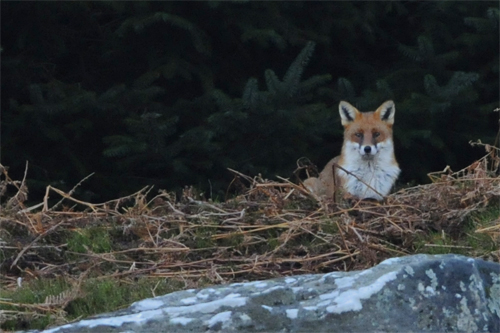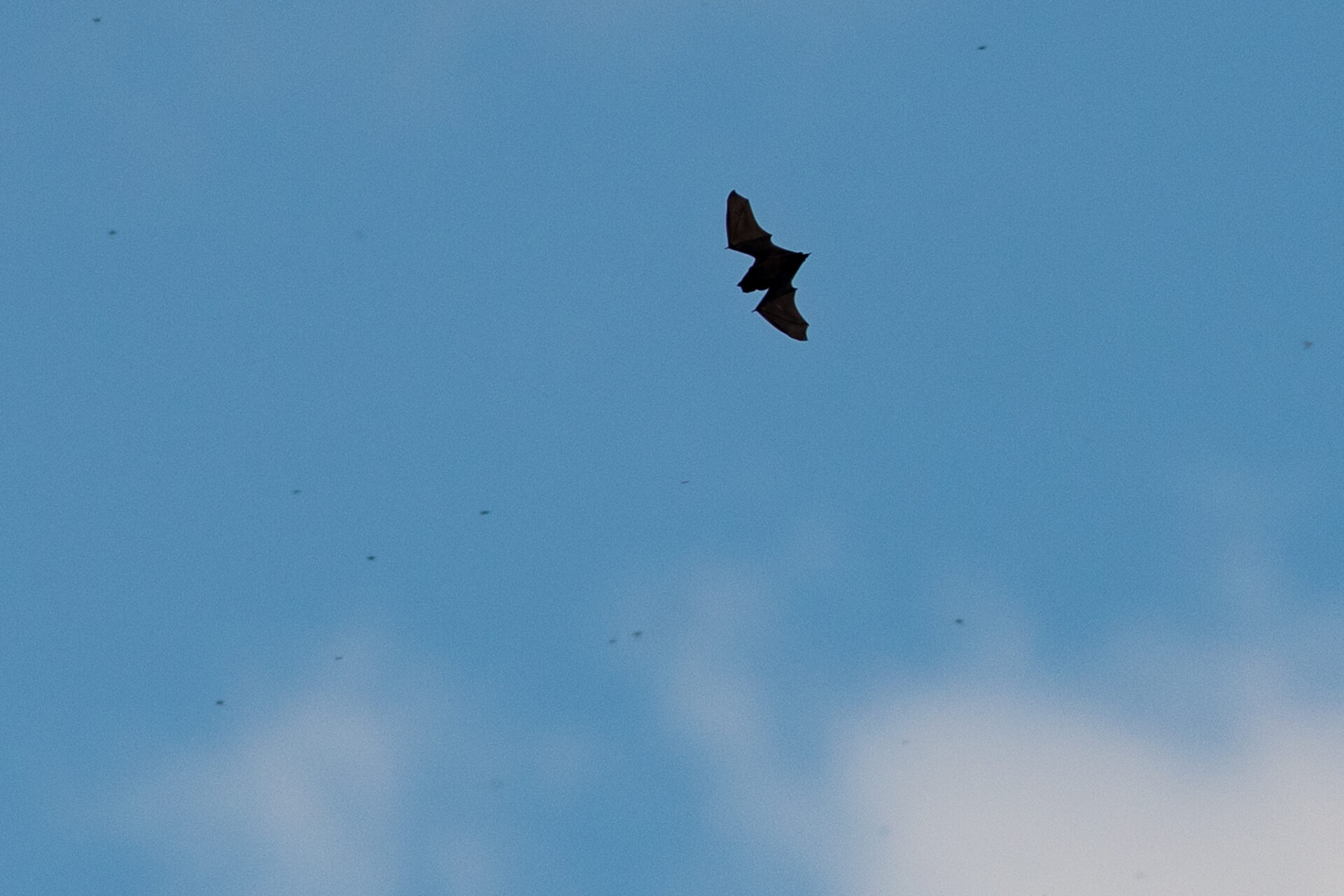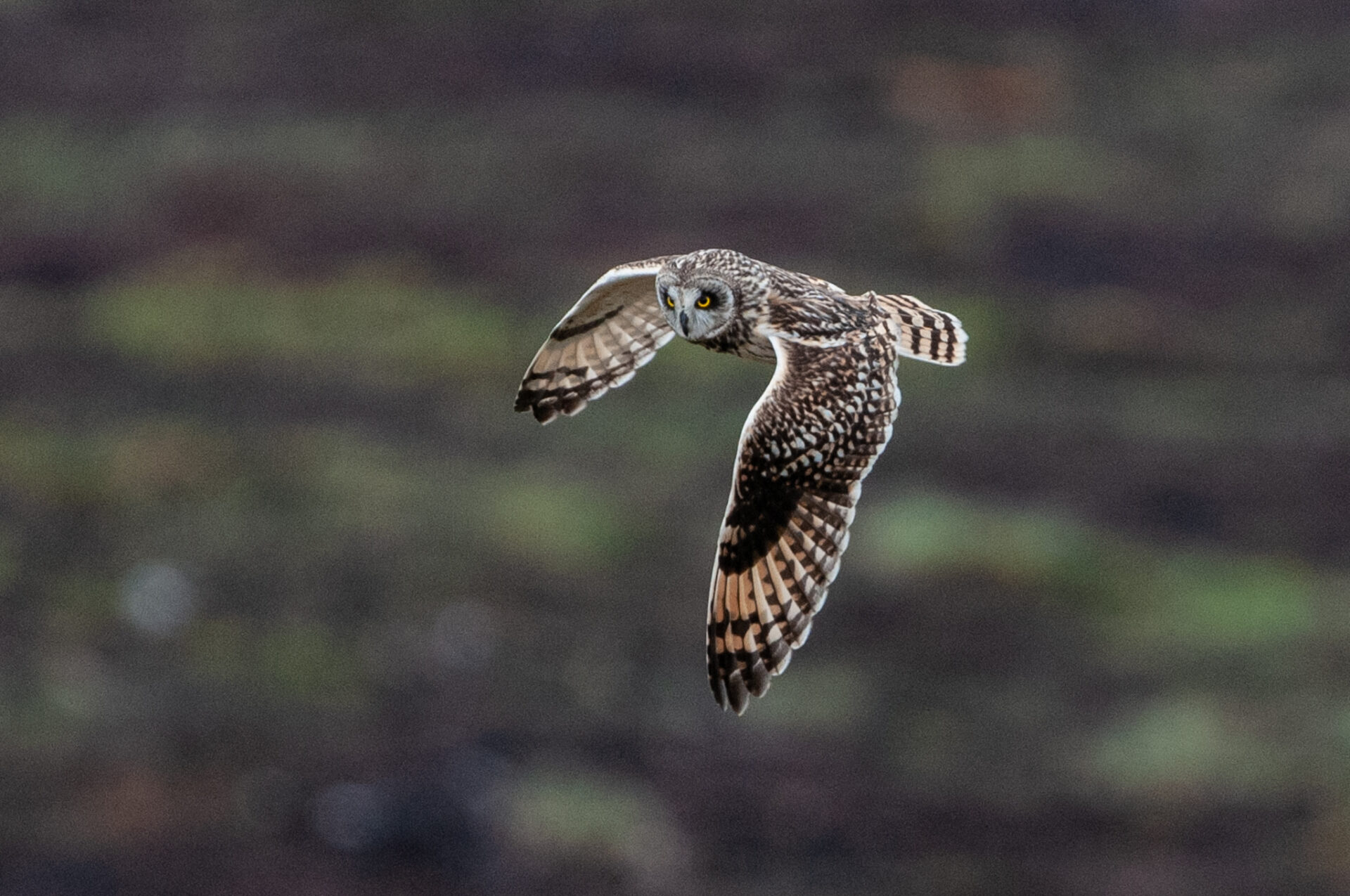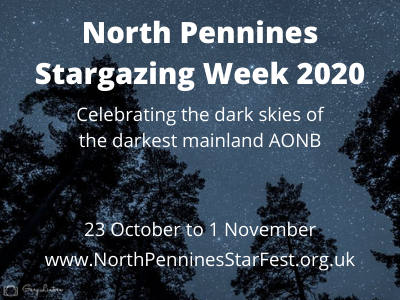North Pennines Stargazing Festival
Things that go screech in the night
1 November 2020
Creatures of the night in the North Pennines
by Dr Martin Kitching
Over rushes, across marshes,
Owl hushes –
Will you listen with Owl ears
for a while?
Let the wild world’s whispers
call you in?
from ‘The Lost Spells’ by Robert Macfarlane and Jackie Morris
Do you have a favourite season? Maybe the verdant green shoots of spring speak to you of growth and regeneration after the dark days of winter? Perhaps the long days of summer are what stir your heart? Autumn, with its warm colours and shortening daylight? How about the winter with long dark nights, snow, frost, and the bare skeletal forms of trees against a gloomy sky?
How about a favourite time of day? Dawn, with the rising sun an echo of the larger scale transition between spring and summer? Dusk, as wildlife that hides itself away in the glare of daylight starts to reveal its presence?
My own preference is for autumn and winter but, on a daily scale, dusk and the transition to night-time excites me at any time of the year. Crepuscular and nocturnal wildlife is a multi-sensory experience. As you increasingly rely on your low-light vision, sounds and scents assume a role with far greater importance.
The North Pennines National Landscape is blessed with a great mix of habitat types that will reward exploration outside of daylight hours. I prefer to find a spot where I can sit and watch, either from my car or next to a stream or woodland footpath, and see what comes along.
Most of the mammals you’ll find in the North Pennines are active at night. Small rodents scurry, usually unidentified, across roads but the larger mammals are generally much more obliging. Foxes are incredibly adaptable but roe deer and badger both tend to be found in wooded areas. The great mammalian nocturnal specialists though are bats, with a range of species found throughout the North Pennines. Wherever there are insects you’ll find these extraordinary flying mammals. Finding a spot to sit and watch close to water can often be incredibly productive. If there are insects hatching then bats can often be very flying very low and as your eyes adjust to the diminishing light level you’ll be surprised at how easy they are to spot.


As dusk tightens its grip on the remaining daylight, birds heading to roost are one of nature’s great wonders. Rooks, jackdaws and carrion crows roost en-masse and a great project to set yourself is to find those roost sites, and those of starling too. Watch for birds just before dusk, all heading purposefully in the same direction and then explore where they seem to be going.
Standing on a moorland edge in the dark, with the bizarre thrumming of lapwing wingbeats and the cackling of red grouse, is an awe-inspiring experience, but the masterful creatures of the night, and the subject of a 50 year love affair for me, are owls. Barn owls ghost over moor and meadow, short-eared owls inhabit the neither one thing nor the other boundary between day and night and, in woodland and shelter belt, the tremulous quavering hoot of male tawny owls contrasts with sharp ke-wick of the females.

Perhaps the strangest denizens of the dark are among the smallest. Inspiring terror in some, although they really are small, flimsy, and harmless (in the main), moths are fascinating. There are moths on the wing throughout the year, although very few species manage to cope with the winter. If you’re driving at night in the summer and autumn, there will be times when the beam of your headlights picks out a veritable snowstorm of flying insects, and the majority of those are likely to be moths. Some species are very habitat-specific so exploring woodland, moorland and farmland should each produce something different. Even more fun (and much more environmentally-friendly than driving) is to set up your own non-lethal moth trap. Something as simple as a bright bulb with a white sheet underneath, so you can see the moths, will potentially attract an assortment of the weird, wonderful and beautiful, as well as insects that will quite happily bite you. A vital part of your kit for nocturnal wildlife watching should be insect repellent; I’ve been bitten from early March through to late October, so probably best to assume that there could always be something lying in wait for you.

There are many versions of the 7P’s (or 5P’s, or 6P’s…) but always remember that Prior Planning and Practice Prevents Poor Performance. If you’re going to visit an area in half-light, or in the dead of night, make sure that you’re really familiar with it in daylight. Know where tracks and trails lead, where there are hazards that, while possibly inconvenient during the day, could be treacherous at night. Make sure your head torch has fully-charged batteries, that you have enough warm clothing to deal with falling temperatures, food and drink to sustain you and make sure that somebody knows where you’re going.

Martin is the Director, and Senior Guide, of Northern Experience Wildlife Tours; wildlife guide, photographer, astronomer, poet, and deeply in love with the sea, sky, and moorland – preferably turbulent and awe-inspiring, dark and cloudless, and bleak and exposed respectively.
Visit our Stargazing Festival hub for current stargazing events, blogs and features.












